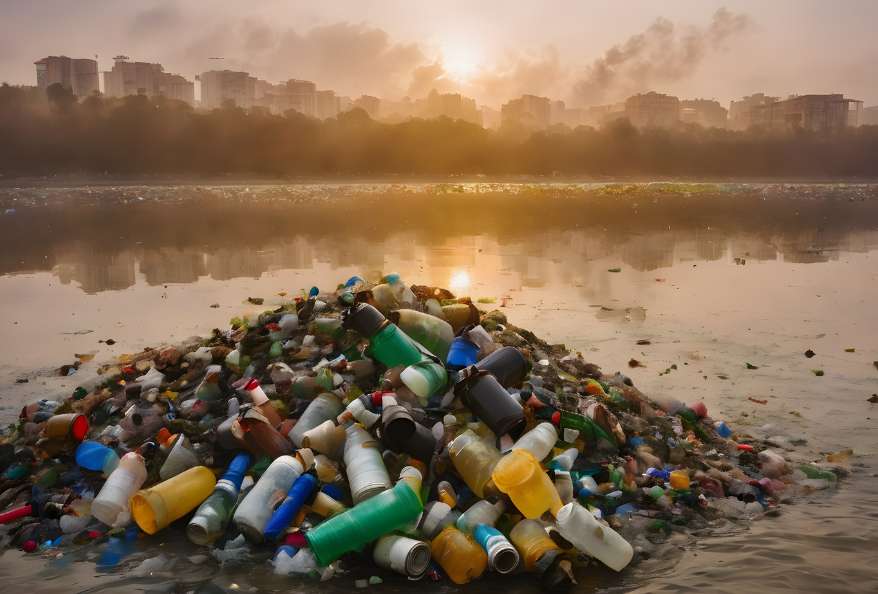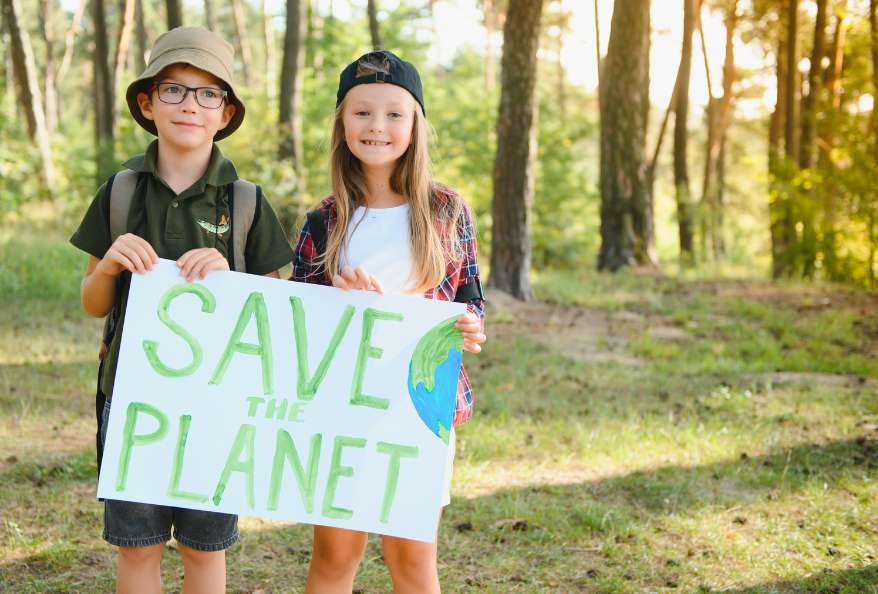Clean Cities, Dirty Skies: The Invisible Garbage Humanity Ignores
Estimated reading time: 5 minutes
Across the world, nations proudly showcase their clean cities. From Singapore to Stockholm, from Dubai to Delhi, urban streets are swept, waste is segregated, and recycling programs are celebrated as triumphs of modern governance. It is comforting to believe that humanity is finally learning to live neatly. But beneath this visible order lies a dangerous illusion. While we have become efficient at cleaning what we can see, we continue to pollute what we cannot. The planet’s streets may be spotless, but the atmosphere above them is turning into a vast landfill of invisible garbage.
Carbon dioxide and other greenhouse gases are quietly destabilizing the climate system on which all life depends.
The Two Kinds of Garbage: Visible vs Invisible

Every human being produces two kinds of waste. The first is visible waste — plastic bottles, food scraps, packaging, discarded electronics — the tangible debris of our consumption. It’s unsightly, it smells, and it offends our civic pride, so we sweep it, segregate it, and recycle portions of it. This is the kind of garbage our policies and competitions focus on.
The second kind, however, is invisible garbage/waste. The carbon emissions are released from every activity that powers our modern comfort. Each household on Earth produces roughly 10,000 kilograms of invisible garbage every year in the form of carbon dioxide. It comes from cooking with fossil fuels, driving vehicles, using electricity, flying, and streaming data. Additionally, manufacturing the billions of goods that sustain our lifestyles.
Unlike plastic or food waste, this invisible garbage does not rot, disappear, or get collected. It lingers in the atmosphere for over 300 years, trapping heat and altering the planet’s energy balance. The carbon emitted today from a family dinner, a car ride, or a gadget purchase will continue to heat the planet for centuries. Thus, the result: longer droughts, fiercer floods, unpredictable monsoons, melting glaciers, and record-breaking heatwaves.
The streets may look clean, but the sky is not.
Also Read: Plastic Pollution: Growing threat of Plastic Pollution.
Invisible Garbage: The Illusion of Cleanliness
Human civilization has mistaken visible tidiness for true cleanliness.
We judge progress by how well we manage what lies on the ground, not by how responsibly we manage what floats above it. Our idea of cleanliness is confined to streets, drains, and landfills, while the air is neglected. The shared bloodstream of the planet remains an unmonitored dumping ground.
A city can win international awards for sanitation while its air quality index remains hazardous. Corporations can boast of “zero waste” factories while their supply chains emit millions of tonnes of carbon. This is the hypocrisy of our age: cosmetic cleanliness masking atmospheric chaos.
The real importance of cleanliness in the 21st century must mean something far more profound. Not just freedom from visible dirt, but freedom from the addiction to overconsumption that produces invisible waste. Reducing carbon emissions is not an act of environmental charity; it is the new definition of hygiene for civilization.
Also Read: Tech that’s Transforming Air We Breathe!
The Way Forward: From Awareness to Action

If we truly want to clean the planet, we must first clean our thinking. The fight against invisible garbage cannot be won with technology alone; it requires a shift in behavior, culture, and consciousness. This is where a new framework for climate correction through consumption awareness becomes vital.
The Finite Earth Movement proposes a three-step approach: Learn, Practice, and Lead.
- Learn through Consumption Literacy — understanding that every act of consumption carries a carbon cost. This literacy teaches that our energy, water, and material use all draw from the same finite pool of planetary resources.
- Practice through TUPEE habits — Travel less, use items wisely, purchase cautiously, eat sustainably, and eliminate electricity waste. These are daily micro-actions that reduce invisible garbage at its source.
- Lead through Climate Action Cells in institutions and communities- Where collective behavior is measured, celebrated, and replicated. Thus, creating visible accountability for invisible change.
For younger generations, the Consumption Literacy Capsule (CLC) helps cultivate these insights early. It educates children to see the link between their toothbrush, their meal, their clothes, and the climate. It builds the foundation of a new kind of importance of cleanliness — one rooted in mindfulness, not materialism.
Invisible Garbage: The Wake-Up Call
We are now standing perilously close to the 2°C global-warming threshold, beyond which the Earth’s climate systems may spin into irreversible decline. Even if this were only 0.01% correct, it deserves humanity’s complete attention — because what is at stake is not our comfort, but our survival.
The danger today is not just pollution, but illusion — the illusion that visible order means safety. As long as we celebrate spotless streets while filling the sky with carbon, we are only transferring our waste from the ground to the air.
It is time for a planetary redefinition of the importance of cleanliness — one that treats the atmosphere as our largest and most fragile commons. A truly clean civilization will be the one that cleans both the ground and the sky (visible and invisible garbage), guided by wisdom, restraint, and responsibility.
Additionally, to stay updated with the latest developments in STEM research, visit ENTECH Online. Basically, this is our digital magazine for science, technology, engineering, and mathematics. Furthermore, at ENTECH Online, you’ll find a wealth of information.
Reference
- Urban pollution. (2018). In Wiley eBooks. https://doi.org/10.1002/9781119260493






